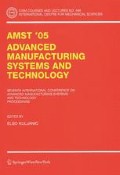Abstract
In impression die forging the role of the flash geometry is fundamental since a proper design of the flash land strongly influences both the complete die filling and the die wear (i.e. the die life and the related costs). In this paper an integrated approach between numerical simulations and statistical tools was developed with the aim to optimize flash thickness in order to reduce die wear and to minimize material wasting. As wear is regarded, an analytical model depending on sliding velocity, temperature, die hardness and contact pressure was utilized during the numerical simulations of the process in order to reach a wear evaluation for different values of the flash design variables. Thus, it was possible to reach a prediction of tool life for different conditions. Furthermore, a cost analysis was carried out in order to investigate the influence of flash design on tool costs and material wasting costs.
Access this chapter
Tax calculation will be finalised at checkout
Purchases are for personal use only
Preview
Unable to display preview. Download preview PDF.
References
M. Arentoft, P. Henningsen, N. Bay, T. Wanheim, (1994), Simulation of defects in metal forming — an example, Journal of Materials Processing Technology, Vol. 45, 527–532.
R. Di Lorenzo, S. Beccari, M. Piacentini, F. Micari, (2004), Numerical and experimental investigation on hot impression die forging: flash design optimization, Journal of Steel GRIPS Vol.2, 153–157
S. Stupkiewicz, Z. Mroz, (1999), A model of third body abrasive friction and wear in hot metal forming, Wear, Vol. 231, 124–138.
J. H. Beynon, (1998), Tribology in hot metal forming, Tribology International, Vol. 31/1–3, 73–77.
J.H. Kanga, I.W. Parkb, J.S. Jaec, S.S. Kang, (1999), A study on a die wear model considering thermal softening: (I) Construction of the wear model, Journal of Materials Processing Technology, Vol. 96, 53–58
J.H. Kanga, I.W. Parkb, J.S. Jaec, S.S. Kang, (1999), A study on die wear model considering thermal softening: (II) Application of the suggested wear model, Journal of Materials Processing Technology, Vol. 94, 183–188
Ulf Stahlberg, Jonas Hallstrom, (1999), A comparison between two wear models, Journal of Materials Processing Technology, Vol. 87, 223–229.
V. Vazquez, T. Altan, (2000), New concepts in die design-physical and computer modeling applications, Journal of Materials Processing Technology, Vol. 98, 212–223.
S. Kalpakjian, (1997), Manufacturing Processes for Engineering Materials 3rd edition, Addison-Wesley Longman Inc., USA.
R. Douglas, D. Kuhlmann, (2000), Guidelines for precision hot forging with applications, Journal of Materials Processing Technology, Vol. 98, 182–188.
R.G. Snape, S.E. Clift, A.N. Bramley, (1998), Sensitivity of finite element analysis of forging to input parameters, Journal of Materials Processing Technology Vol. 82, 21–26.
DEFORM 3D User’s Manual.
G. Snape, S. Clift, A. Bramley, (2002), Parametric sensitivity analyses for FEA of hot steel forging, Journal of Materials Processing Technology, Vol. 125–126, 353–360.
Author information
Authors and Affiliations
Editor information
Editors and Affiliations
Rights and permissions
Copyright information
© 2005 CISM, Udine
About this paper
Cite this paper
Di Lorenzo, R., Corona, V., Micari, F. (2005). Hot Impression Die Forging Process: An Approach to Flash Design for Tool Life Improvement. In: Kuljanic, E. (eds) AMST’05 Advanced Manufacturing Systems and Technology. CISM International Centre for Mechanical Sciences, vol 486. Springer, Vienna. https://doi.org/10.1007/3-211-38053-1_45
Download citation
DOI: https://doi.org/10.1007/3-211-38053-1_45
Publisher Name: Springer, Vienna
Print ISBN: 978-3-211-26537-6
Online ISBN: 978-3-211-38053-6
eBook Packages: EngineeringEngineering (R0)

